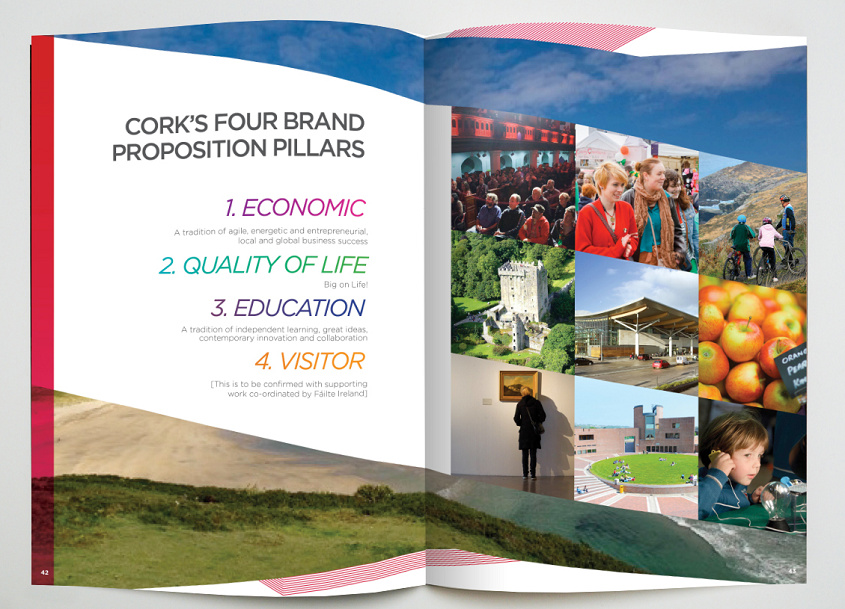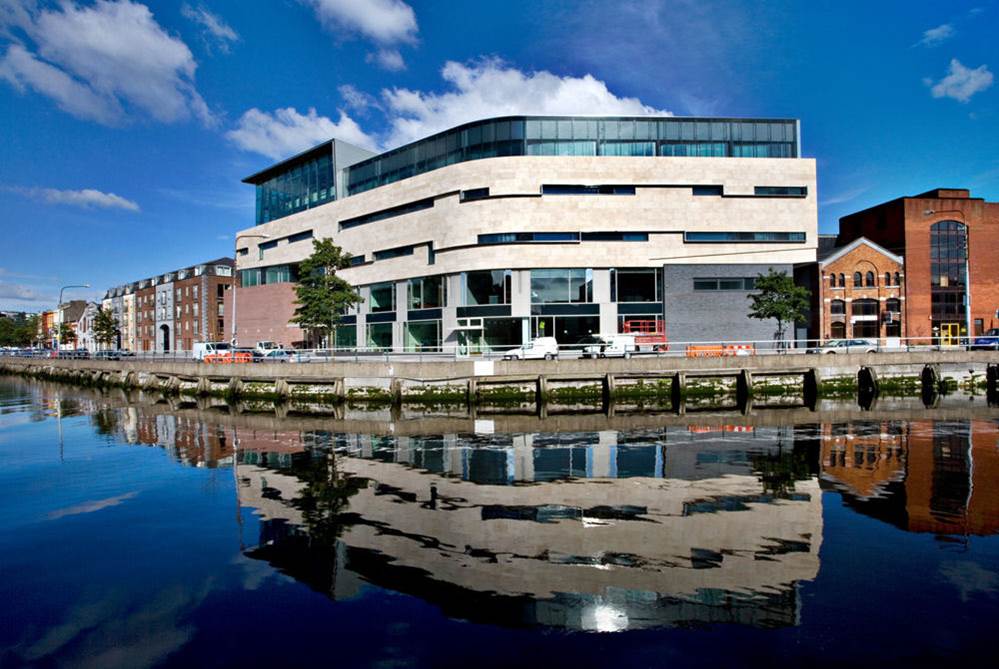PLACE BRAND BOOKS
This blog post is about the creation of Place Brand Strategy
Books and the benefits they can bring.
It was originally published by City Nation Place on 5 May 2015.
If you have never seen one you might well be asking what
brand strategy books are, who are they for and where they fit into the place brand
process?
The answer is that
the core purpose for the creation of place brand books is to ensure consistency
of understanding of brand strategy, its implementation, management, marketing
and communication.
Typically they are created to brief stakeholders of the
place on how to create, enhance and communicate the offer of the place and the desired
experience it will provide. Typical content includes:
- The process that was followed to create the agreed brand strategy;
- The central purpose of the strategy;
- The core elements of the brand proposition, brand essence and brand pillars – specific offers and experiences;
- The target market audiences for the proposition.
- The key messages the place wants to communicate to those target market audiences about the offer and experience of the proposition;.
- The action stakeholders can take to communicate the proposition – jointly and individually;
- The actions stakeholders can take to invest in the further development of the proposition;
- The implementation and management of the brand strategy and its renewal over time.
While brand books are principally focused on informing the
internal audience of a place they can also act as a brief for external facing creative
work on as place and attraction marketing strategies and the preparation of coordinated
communications by stakeholders in collaboration and for their own individual
strategies and plans.
This is not
about guidelines on the use of logos and typefaces
This kind of place brand (strategy) book is very different
from design-focused brand guidelines or “Brand Bibles”. The role of Brand
Bibles is to guide the use of brand identities/logos for use in marketing
campaigns and general awareness raising activities.
Their audience is people
specifying how and where to place logos, the correct use of font types, sizes,
colourways and visual expression to ensure consistency across multiple
applications.
Inspiration and
Insight
When I was involved in setting up Placebrands in 2002/3 and
working on the development of a place brand strategy for the Overhoeks area in
north Amsterdam for ING Real estate (at the time one of the largest urban
development and regeneration projects in the Netherlands) thinking about how
best to communicate the emerging place brand strategy for the area, my
co-director Simon Anholt introduced me to the concept of brand books and shared
with me the brand book created for the Diesel clothing range and it stimulated
me to begin to develop my thinking on what might be a place or destination
equivalent.
Diesel was one of a number of fashion brands that had the
powerful insight into the positive impact that a book that explained their
brand strategy could have on their staff, their suppliers and their advisers. I
realised that Diesel, like many fashion mavens and retailers, were early
promoters of a holistic approach to brand experiences, an insight that led me
to believe that places should do the same.
The founder of Diesel, Renzo Rosso, recognised that for a
consistent brand experience, everything the brand does needs to fit together
and to be “On-Brand”, in other words to be in line with the agreed brand
proposition; all touch points (places where people interact with it) of the
brand have to be aligned; all point of sale materials, the music and smell in
the shops needs to be consistent, complementary and add up (and be building
blocks) to provide the planned brand experience. To capture and communicate his
brand Rosso created the Diesel brand book.

Picture courtesy of Diesel
The role of the brand book is to ensure that everyone
working for the company understands the brand strategy in all of its
manifestations, how the brand is experienced, how it is marketed, how its
products are created, how it is explained, its values and how they are
exemplified.
So, who is the Audience
for Place Brand Strategy Books?
While place brand strategy books are principally focused on
the internal audience of a place – the staff of the stakeholders who put the
strategy together – local authorities, further and higher education
institutions, special regeneration or development partnerships, they can also
be very useful to place marketing and place management partnerships, chambers
of commerce, and those who wish to promote the specific offers and experience of the brand proposition
– e.g. museum operators, sports venues, event organisers, retail centre
operators, property developers and agencies set up to attract inward
investment.
They can inform place marketing strategies and communication
action plans created by stakeholders in combination or their own individual
strategies and plans.
And, if the brand strategy has progressed to the point of
having a detailed plan for the implementation and delivery of the brand
proposition – what I term as an “Experience Masterplan”, the brand book can
also incorporate information on this and how it is being implemented.
Place Brand Books –
Explaining Strategy - Development, Management, Marketing and Delivery
My take on the development of place and destination brand
strategy is that it’s about gaining clarity on the offer and experience of
places that local stakeholders want to promote, improve on, develop and add to
over time; the planning, implementation, marketing and management of that offer
and set of experiences.
In my practice in this field I increasingly emphasise the
importance of consulting with local
stakeholders on their views of their place in its current state, the importance
of involving them in the development
and planned implementation of the agreed brand strategy, and the importance of
offering them opportunities to invest
in its realisation.
And I record the development of the strategy over time in
order to be able to tell the story of
its creation to others who may not have been able to get involved with its
development for one reason or another but who may nonetheless wish to support
it, promote it and invest in its realisation.
And my favoured “vehicle of choice” for doing so is a place
brand book.
Let’s look at a couple of recent examples of place brand
books that have been created for place brand strategies that I have had a hand
in creating – for the City of Mississauga in Ontario in Canada and the Cork
city region in south west Ireland.
Mississauga
|
|
Downtown Mississauga
with “The Marylin’s” twin towers development at its heart.
Picture courtesy of www3.hilton.com
In 2013 brand strategies were created for the city of
Mississauga and its downtown area by a team led by Trajectory Inc. of Toronto.
Background
information on how these strategies were created can be found at http://www.mississaugabrand.ca/
In
summary the brand strategy for the city and its downtown was created with
significant input from local stakeholders including officials of the city,
representatives of employers, further and higher education institutions and a
wide range of local community groups and organisations.
Why does this matter?
Because it demonstrates authenticity which is key to creating a sustainable
strategy. People need to see visible proof this is not a “faux” idea but
something they co-created as a community.
The brand building process consisted of:
- An audit of existing print and digital city marketing and communication tools and a synopsis of previous studies and reports.
- A review of the many attributes and brand assets the City had to support its image.
- An analysis of relevant city branding case studies and best practices, including a global review of 16 comparable cities and downtowns and interviews with international experts.
- 23 one-on-one interviews with key community stakeholders to explore Mississauga’s current brand and reputation providing important insights into the strategic direction of the City.
- A 15-minute online survey, completed by 500 Mississauga residents and 100 small businesses to gain a better understanding of their thoughts and opinions of Mississauga.
- A series of four brand workshops with a Brand Advisory Panel (each one consisting of between 80 and 100 participants) to better understand Mississauga’s current reputation, in terms of both its positive attributes and what Mississauga must improve in the future in order to continue to be successful.
Taken together, this process resulted in a thorough fact and
research based approach that was the foundation of the overall brand
exploration and development process of this project.
At the conclusion of the brand-building process a brand book,
“Shaping Our Brand Story”, was created that covers the factors that shaped the
brand story that the city wants to tell its target audiences (internal and
external), the core ingredients of the city’s brand offer to those audiences
and the characteristics of the brand offer and experience. These audiences
included staff of the city council, employers, major developers, operators of
retail malls, further and higher education institutions, transport systems
operators.
It has been strongly supported by the city and is being used
as a strategic guide for a city-created communications strategy and is the
foundation for a three-year marketing plan.
In parallel with this work the City Council’s Communications
Team developed a new logo to represent the brand proposition, illustrated
below.
|
The new
Mississauga Brand Logo
Courtesy of City of Mississagu
This logo
has been used to illustrate the central ingredients, brand pillars and areas covered by the new brand proposition as illustrated below.
Image courtesy of the City of
Mississauga
|
The brand strategy development is supported by a special
microsite and video. A copy of the brand book can be downloaded here http://www.mississaugabrand.ca/assets/mississauga_brandbook.pdf
This book has been downloaded by thousands of people and is
providing a consistent story for locals and potential migrants and investors on
the city’s brand proposition and agreed plans for its improvement and
development over the years ahead.
This is an example of a brand book that has migrated from
having an internal focus to becoming a valued city marketing and promotion
resource.
Cork City Region
In 2013/14 a group of public stakeholders including the Cork
Chamber of Commerce, the Port of Cork, Cork Airport, University College Cork,
Cork Institute of Technology, Fáilte Ireland (the Irish tourism development
body), Cork City Council and Cork County Council, came together to form the
Cork Strategic Marketing Group with the shared objective of improving the
message on the offer of the region to generate economic development and inward
investment.
The Group hired a team led by Colliers International from
Dublin to undertake an audit of the current marketing and messaging from the
region, to assess what local stakeholders thought about its current offer and
their ideas for its improvement, to develop, test and refine a compelling and
coherent brand strategy for the region and create a brand book to brief local
stakeholders and key intermediaries on the brand proposition that is now the
basis for future marketing and messaging.
|
|
|
|
|
|
A copy of the brand book can be downloaded at www.corkbrand.ie
This brand book summarises why the brand strategy and the
story of how it was created, the Cork brand promise and the four central
pillars of the brand offer.
The brand strategy was developed through an 8 stage process:
- An audit of current marketing and messaging about the current offer of the region to assess the extent of its accuracy, the extent of coordination of messaging and the impact of the messaging.
- Meetings with sub regional interest groups and sector groups to identify their views on the current offer of the region and the impact of the messaging.
- An online survey using social media channels (Facebook, Twitter and LinkedIn) to gauge individual’s views on the offer, marketing and messaging of the region.
- The development of a draft brand strategy for the region and its testing through a specially designed web site which hosted a “Descriptor” of the draft brand and a questionnaire for people and organisations to respond to from Cork, Ireland and around the world.
- Meetings with key groups of stakeholders to assess their opinion of the draft brand strategy.
- The refinement and finalisation of the brand strategy in the light of feedback from the consultation process.
- The development of a brand book describing the process of creating the brand strategy, its essence and its four core brand pillars as the agreed basis for marketing and messaging the brand proposition to target market audiences.
- Detailed briefings for the staff of key stakeholders on the development of the brand, the content of the brand book and how to make effective use of it.
The Cork Brand Book sets out:
- The reasons why the brand strategy was developed – principally to help better-position Cork and Ireland for future economic success and support and drive the economic development of the region.
- The essence of the brand proposition – “A menu for your success”.
- The offer and experience that Cork wants to be known for, the four core pillars of its brand proposition:
- The quality of life offer
- The education offer
- The visitor offer
- Guidance on using the book.
This is the first edition of the brand book and it is
expected that it will go through many iterations over the future as the brand
proposition is strengthened and developed through action and investment by
local and international investors. It will tell an emerging and ever more
compelling story over time.
The
Benefits of Brand Books
Developing a place brand strategy is a powerful
process that brings all of the stakeholders together to create a compelling and
engaging story for the place. And, the story of any place is not static and it
is vital that it is constantly revisited and revised. A good vehicle for doing
so is the place brand book.
In essence place brand books ensure that multiple
stakeholders of places “sing from the same hymn sheet” and are consistently
“on-brand” in promoting their agreed brand proposition and messages about it to
target market audiences, work to an agreed shared plan to implement their
strategy and jointly develop and build their brand proposition over time.
A powerful benefit is that it helps the place
speak more coherently and thus have more conversations and do more deal
Place brand books can inform the development and
content of marketing collateral including:
- The organisation of new brand management and marketing organisations;
- The design of promotional websites for the overall offer of a city and for specific areas such as those undergoing regeneration;
- The design of inward investment prospectuses in support of regeneration initiatives;
- The design of marketing collateral for programmes of activities and events in “open source code”;
They can also inform:
- How the place welcomes and treats people;
- What the media thinks and says about the place;
To remain relevant brand books must be updated on a regular
basis to capture additions to the offer and experience of the place
improvements to the existing range of offers.
They also need to be updated to reflect the messages that
the place communicates to its target market audiences as their tastes change
and as new audiences emerge.
And, while it is clearly possible to design a classy looking
brand book in a traditional print format, the need for them to remain “live”
indicates that the most effective way of keeping them so is in a digital
format.
Malcolm Allan wishes
to thank Jeannette Hanna, Roger Hobkinson, Greg Canty and Michael Donohue for
their advice and comments on earlier drafts of this blog post.














